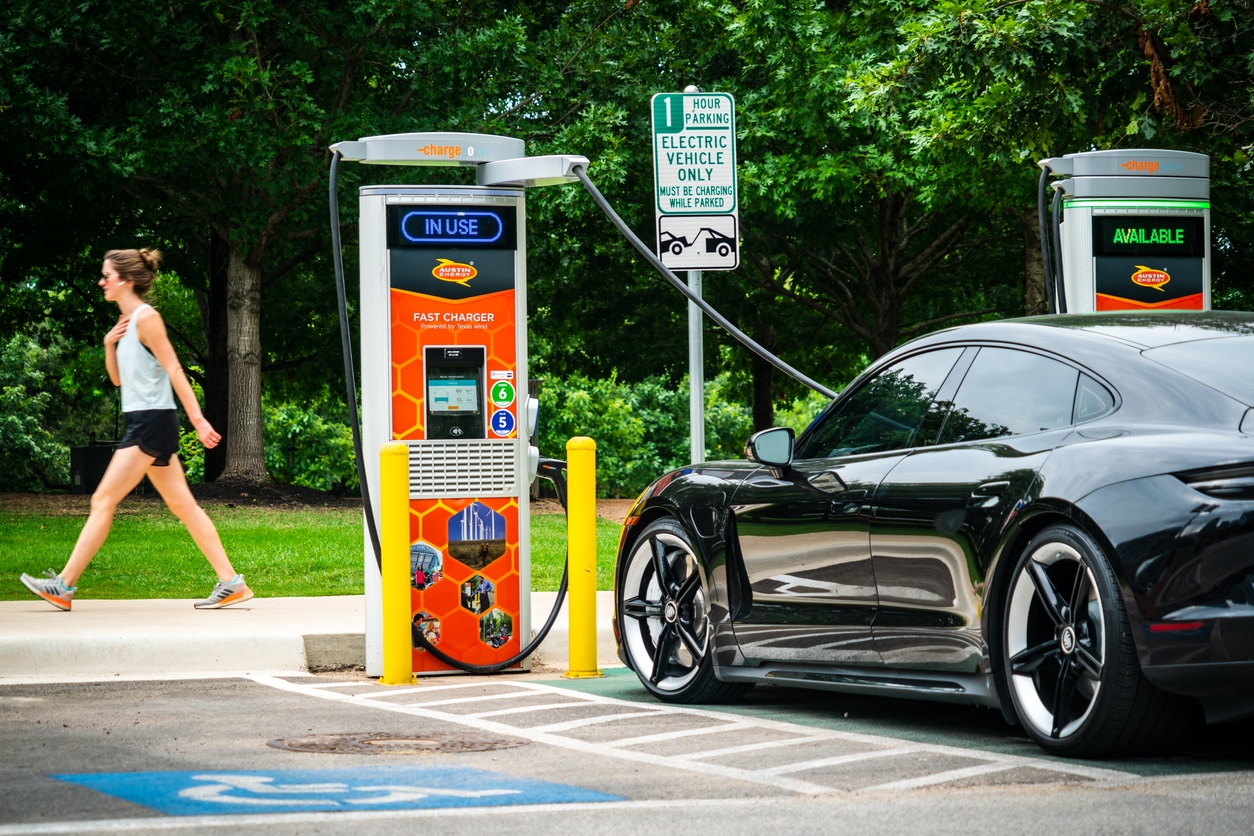
Electric Vehicles and Their Impact on the Environment

Sales of electric vehicles (EVs) are rapidly increasing worldwide, particularly in countries like Norway, Iceland and Sweden. In 2021, sales numbers doubled from the previous year and the World Economic Forum suggests more EVs are sold per week than the entire number sold in 2012.
The standard internal combustion engine (ICE) market experienced significant declines in sales due to the COVID-19 pandemic, yet the EV market flourished. With more EVs on the road now than ever, some consumers wonder how these new vehicles impact the environment.
Here’s a deeper look at EVs, the state of today’s global market, and the positive and negative effects of widespread adoption.
An Overview of the EV Market
It’s no secret more countries are concerned about the threat of climate change. Some regions are already experiencing harsher weather conditions, such as severe droughts, flooding, storms, heat waves and rising sea levels.
There’s a growing demand to reduce global carbon emissions and create a more sustainable transportation sector. However, there is no one way to accomplish these goals. Various steps must be taken to mitigate climate change and protect the environment.
For example, countries are focusing on transitioning to clean energy, which includes putting EVs on the road. Take California, for instance — it will officially ban the sale of all gas-powered vehicles by 2035.
Additionally, many consumers are considering purchasing an EV due to global inflation. Research shows charging an EV costs an average of $0.105 kWh, whereas the average price of gasoline is $4.065 per gallon.
The EV market is growing as these vehicles and batteries become cheaper, consumers grow more environmentally conscious and governments aim to cut emissions. Research from Fortune Business Insights suggests the market could reach over $137 billion by 2028.
How Electric Vehicles Impact the Environment
It’s commonly considered electric vehicles are better for the environment, as they do not require traditional gasoline or contribute to emissions. Let’s take a look, however, at some of the positive and negative impacts EVs have on the environment.
Positive Impacts
- EVs have no tailpipe emissions that contribute to air pollution.
- EVs are relatively quiet, so they do not contribute to noise pollution.
- EVs do not use engine oil, which is generally bad for the environment.
- EV brake pads are different so they “don’t corrode, crumble, and fail prematurely” thus requiring expensive maintenance.
- EV manufacturers traditionally try to use eco-friendly materials whenever possible.
- EV chargers, when powered by renewable energy sources, have less impact on the environment and its natural resources than traditional gas stations. No transportation is required to get the “fuel” to the chargers, unlike a gas station’s need to transport fuel.
Negative Impacts
- EV chargers generally rely on electricity from power plants, which still use fossil fuels. This could be problematic in states like California where the energy grid is already being pushed to its limit during the hot, summer months, so residents will be forced to experience more rolling blackouts.
- EV battery production can adversely impact the environment, such as a loss of biodiversity, air pollution and decreased freshwater supply.
- EV batteries consist of materials like nickel, lithium, cobalt and others, which are energy-intensive to mine. These minerals are also often mined in regions with a poor environmental record. Take, for example, the lithium mining currently happening in Argentina. According to Time, Argentina accounts for 21% of the world’s lithium reserves and plans are already in place to open 13 more mines (in addition to the two already in production). Many worry the mining could cause massive destruction, corrupt an already fragile ecosystem and pillage the country’s natural resources all in the name of “green progress”.
- EV battery recycling methods are still in their early stages, but they are not specifically designed to be recycled.
- EV tires wear out faster due to the heavier weight and increased torque of the vehicle. Expected lifespan on EV tires is only between 30,000 to 40,000 miles. This means you’ll be buying tires more often and thus contributing to increased emissions.
The main takeaway is EVs, in certain circumstances, can have an improved environmental impact vs. conventional gas-powered vehicles. However, batteries, charging and various manufacturing processes still negatively affect the environment. More work must be done to ensure these cars are as eco-friendly as possible.
Weighing the Environmental Benefits and Drawbacks of EVs
There are both positives and negatives to electric vehicles. Further innovation in this sector could help manufacturers overcome some of the challenges, such as those found during EV production and end-of-life recycling, as well as charging times and sustainable energy sources, but only time will tell.
7 Comments
-
-
J
Do you also not buy diamonds (engagement ring, cutting tools, gas car applications, etc) and other products made from mined materials in which many children die?
-
-
SINDRA WIDJAJA
Good and balance assessment
-
Shana Cooper
Thank you for the information. It seems like every good is outweighed by a negative side effect. We are far away from solving our carbon footprint and we spend too much time and money on big items like EV, but we truly need to focus on all the daily little items that add up. Regulations on plastics, to-go trash, recycling, product waste and regular non-vehicle energy consumption needs to be address before we push every citizen into an EV. Another solutions is to walk more. Fix city infrastructure to make shared rides and walking more accessible!
-
Susan
It’s a 355 mile trip from my front door to my Dad’s front door. I make this trip about a half-dozen times a year. I have yet to meet ANY vehicle that can make that trip in 1 tank of “gas” — whether it’s fossil fuel or electric. Since it takes longer to fully charge an electric car, I think I’ll stick with gasoline. It’s already a 7-hour trip (including bathroom and meal breaks) .
-
Keith
J..that is a very bias response. Lithium mining is not good for the environment. Get your head out of the sand.
-



Brian
I will not buy eltric car when I think of all the children dieing to make the batters and where all these batteries going at the end of there life